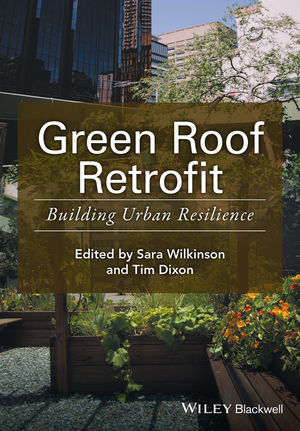
A core element of green building involves the design and use of alternative materials such as the integrated solar roofing system pictured here. (Photo courtesy of Eagle Roofing Products.)
Sustainability and green design are the largest emerging trends driving change in the roofing industry today. Frequently you will find the terms used separately or synonymously, indicating confusion in true meaning.
Green Construction: “An organized effort to design and build buildings using a process and materials which promote environmental sustainability.”
- The Boldt Company, a consulting, construction and maintenance solutions company
Sustainability: “The ability to provide for the needs of the world's current population without damaging the ability of future generations to provide for themselves. When a process is sustainable, it can be carried out over and over without negative environmental effects or impossibly high costs to anyone involved.”
- Sustainabletable.org

Figure 1. Importance of Green Roofing Systems
Ducker Worldwide, a business-to-business market research and consulting company based in Troy, Mich., has conducted thousands of interviews over the past few years with the roofing system value chain including material suppliers, product manufacturers, roofing contractors, architects/specifiers, general contractors, builders, building owners/facility managers and consumers. Data obtained validates several hypotheses, including these four:
1. The concepts of sustainability and green design are driving the most influential emerging trends impacting the roofing market.
2. Energy efficiency is the single most important element of green, according to the roofing value chain.
1. The concepts of sustainability and green design are driving the most influential emerging trends impacting the roofing market.
2. Energy efficiency is the single most important element of green, according to the roofing value chain.
3. The most significant impact is the difference in design and use of alternative materials including:
- Higher R-value insulation.
- Cool roofing materials.
- Garden roofing systems.
- Integrated solar roofing systems.

Figure 2. Growth of Green Roofing Systems
The use of green roofing systems has become increasingly important since 2002, particularly for roofing contractors and end users. (See Figure 1.) In 2008, it was estimated that less than 10 percent of roofing projects were constructed with green materials/systems. By 2013, this number is expected to triple, though economic conditions could inhibit this growth. (See Figure 2.) Over three-quarters of respondents have seen growth in green roofing practices in the past five years and 100 percent believe growth will continue through the next five years. Nearly 40 percent of Ducker’s sample report that the green movement has affected their business. The majority of respondents (81 percent) are specifying/using different systems now, but other comments included companies that market themselves differently (23 percent), receive more business now (11 percent), and are more profitable (8 percent).
Energy Efficiency
The move toward more energy efficient systems is real, and energy efficiency is the single most important element of green according to the roofing value chain. In addition, it is interesting that this perception does not seem to vary whether you are speaking to an architect, general contractor/builder or roofing contractor. (See Figure 3.) Though the use of recycled content sits lower on the relative importance scale, this seems to be one of the primary focal points of manufacturers’ communication/messaging.

Figure 3. Components That Define a Green Roof
In order to obtain greater energy efficiency, roofing constituents are adapting their design and product portfolio offering to include alternative materials and systems ranging from higher R-value insulation to cool roofing materials to garden roofing or integrated solar roofing systems. For example, when assessing the “core” nonresidential low slope roofing materials (such as BUR, modified bitumen, metal, EPDM and specialty single ply) between 2002 and 2007, the bituminous product segment experienced a 5 percent decline (compounded annual growth rate), metal increased 6 percent and the EPDM segment remained fairly flat. In the same time frame, specialty single ply had double digit growth at 11 percent (primarily TPO) driven by heat welded seams, but also the importance of energy efficiency. Architects and contractors have also noticed the same trend on the nonresidential side. Within the residential sector, metal, tile and composite materials have been most impacted by green building.
Green Roofs for Healthy Cities, an industry association, reported that in North America, total garden roof square footage grew 30 percent alone in 2007. Though garden roofs and integrated solar roofing systems are still in their infancy, Ducker expects continued momentum, particularly as system costs become more competitive.
The Next Steps
However, in order for green roofing systems to gain meaningful penetration, a push to further educate building owners, contractors, architects and specifiers about green is critical. Education should incorporate the following:

Figure 4. Extending the Life Cycle of the Roofing System
• What? What does green and sustainability mean? Marketing efforts should incorporate environmentally friendly benefits from a product, system and service perspective (including quality installation, preventive maintenance, etc.) - but be ready to validate claims, as the roofing industry is becoming more cautious due to “greenwashing,” a term used to describe the practice of companies disingenuously spinning their products and policies as environmentally friendly. The practice of greenwashing by many manufacturers has further created confusion and speculation by the industry.
The environmental marketing firm TerraChoice summed it up best regarding what they term the “Six Sins of Greenwashing”:
1. Sin of the Hidden Tradeoff: For example, “energy-efficient” products/materials that contain hazardous materials.
2. Sin of No Proof: Products claiming to be “green,” but with no verifiable certification.
The environmental marketing firm TerraChoice summed it up best regarding what they term the “Six Sins of Greenwashing”:
1. Sin of the Hidden Tradeoff: For example, “energy-efficient” products/materials that contain hazardous materials.
2. Sin of No Proof: Products claiming to be “green,” but with no verifiable certification.
3. Sin of Vagueness: Products claiming to be 100 percent natural when many naturally occurring substances are hazardous, like formaldehyde.
4. Sin of Irrelevance: For example, products claiming to be CFC-free, even though CFCs were banned many years ago.
5. Sin of Fibbing: Products falsely claiming to be certified by an internationally recognized environmental standard like Energy Star or Green Seal.
6. Sin of Lesser of Two Evils: Such as increased energy efficiency or insulation with formaldehyde.

Between 2002 and 2007, the use of metal roofing in nonresidential low-slope roofing materials increased 6 percent. (Photo courtesy of Metl-Span.)
• How?Which products and systems will provide the optimal performance and value in regard to energy efficiency and sustainability given various project parameters (for example, building design, region, harsh environmental conditions, etc.)? What codes, mandates and tax incentives are put in place for public/government facilities as well as the private sector?
As green/sustainability becomes increasingly important, the roofing value chain must adapt their product and service offerings to remain competitive. We are already starting to see this happen today. As Figure 4 shows, the shift to more environmentally friendly, energy efficient roofing systems will continue to upgrade the quality of the materials and systems used, as well as the contractors installing them and ultimately, the longevity of the roof, likely leading to an increase in the volume and value of reroofing projects.


Report Abusive Comment